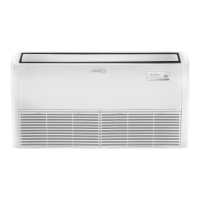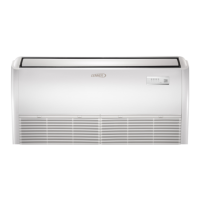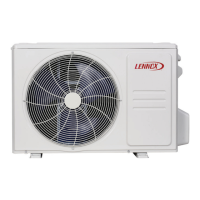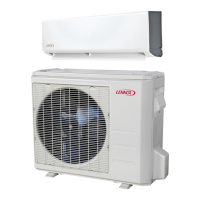23
Unit Start-Up
IMPORTANT
Units should be energized 24 hours before unit start-up
to prevent compressor damage as a result of slugging.
1. Inspect all factory- and eld-installed wiring for loose
connections.
2. Verify that the manifold gauge set is connected.
3. Add additional refrigerant charge if required before
opening valves and while system is still under a
vacuum.
4. Open the liquid and gas line service valves to release
the refrigerant charge contained in outdoor unit into
the system.
5. Replace the stem caps and tighten to the value listed
in “Table 3. Flare Nut Torque Recommendations” on
page 13.
6. Check voltage supply at the outdoor unit terminal strip.
The voltage must be within the range listed on the
unit’s nameplate. If not, do not start the equipment
until you have consulted with the power company and
the voltage condition has been corrected.
7. Refer to the included user guide to operate the system
using the provided remote control.
8. Visually check for binding of both indoor and outdoor
fans.
Adding Refrigerant for Longer Line Set
The outdoor unit is factory-charged with refrigerant.
Calculate the additional refrigerant required according to
the diameter and the length of the liquid pipe between the
outdoor unit and indoor unit connections.
Be sure to add the proper amount of additional refrigerant.
Failure to do so may result in reduced performance.
Table 6. Additional Refrigerant Charge
System Size
(KBtu)
Pipe Length
(feet / meters)
Amount of Refrigerant
to add
18 >25 (7.5) 0.161 oz/ft (15g/m)
24 >25 (7.5) 0.322 oz/ft (30g/m)
36 >25 (7.5) 0.322 oz/ft (30g/m)
48 >25 (7.5) 0.322 oz/ft (30g/m)
Troubleshooting
Table 7. Troubleshooting Codes
Code Description
E0 Indoor unit EEPROM error
E1 Communication error between indoor unit and outdoor unit
E3 Indoor fan speed error
E4 Indoor return air temperature sensor error
E5 Indoor coil temperature sensor error
EC Low refrigerant
EE High water level alarm
F0 Outdoor current overload sensed
F1 Outdoor ambient temperature sensor error
F2 Outdoor coil temperature sensor error
F3 Compressor discharge temperature sensor error
F4 Outdoor unit EEPROM error
F5 Outdoor unit fan speed error
P0 Inverter module IPM error
P1 High or low voltage protection
P3 Outdoor unit low temperature lockout
P4 Compressor drive error
-- Mode conict
P6 Compressor high-pressure or low-pressure switch open
Test Run
Pre-Checks
Only perform test run after you have completed the
following steps:
• Electrical Safety Checks – Conrm that the unit’s
electrical system is safe and operating properly
• Refrigerant Leak Checks – Check all are nut connec-
tions and conrm that the system is not leaking
• Conrm that liquid and gas valves are fully open
Procedure
You should perform the Test Run for at least 30 minutes.
1. Connect power to the unit.
2. Press the ON/OFF button on the remote controller to
turn it on.
3. Press the mode button to scroll through the following
functions, one at a time:
• COOL - Select lowest possible temperature
• HEAT - Select highest possible temperature
4. Let each function run for 5 minutes, and perform the
following checks:

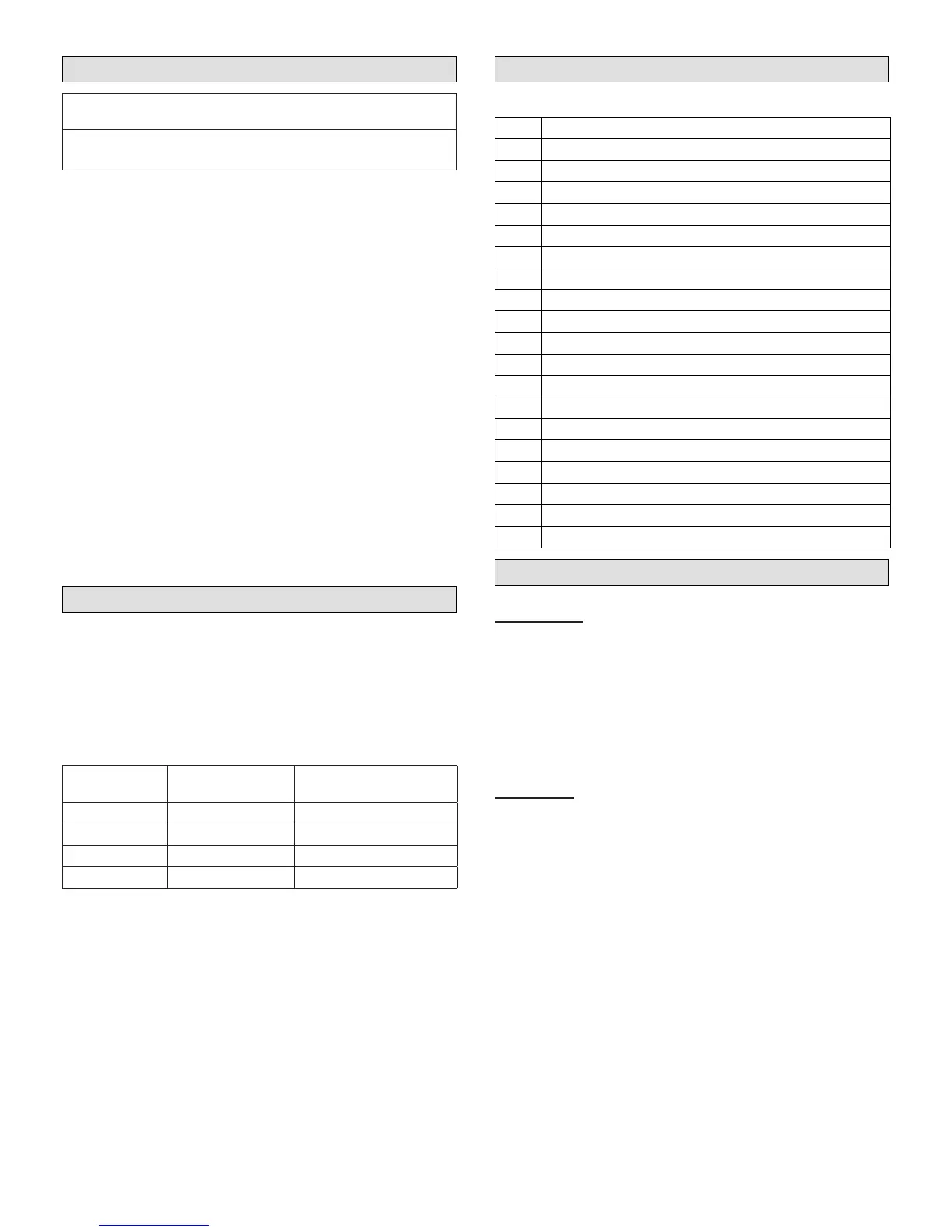